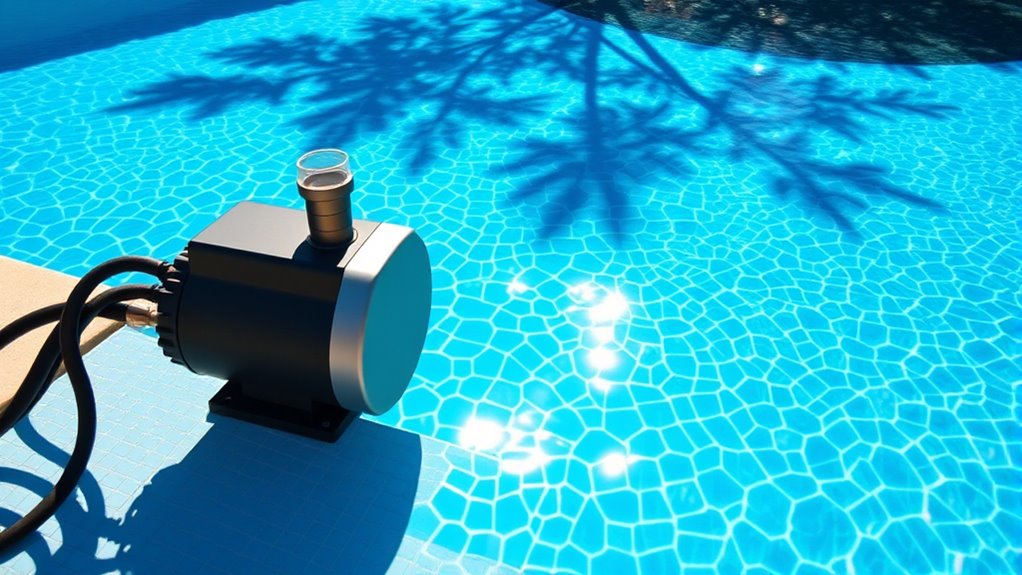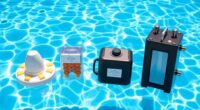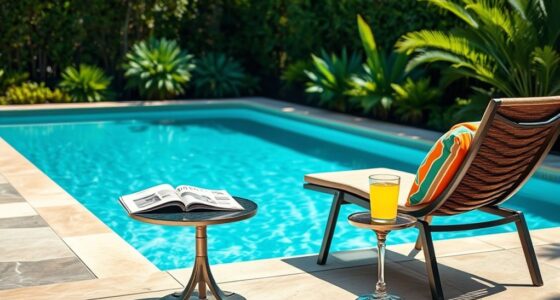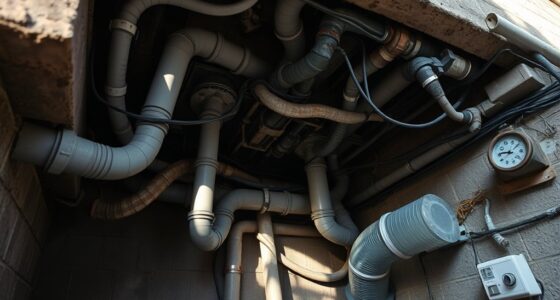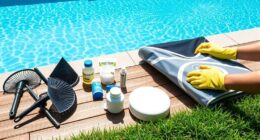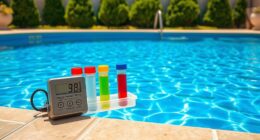Your monthly pool costs depend on the size, equipment, and usage habits. Running your pump regularly, especially during peak hours or with inefficient models, can markedly increase your energy bills. Using energy-efficient pumps, covering your pool, and limiting running times help cut costs. Monitoring your energy use and adjusting schedules can also make a difference. Keep exploring to discover practical tips that help you stay within your budget while enjoying your pool.
Key Takeaways
- Pool pumps and equipment can significantly increase monthly energy costs depending on size and usage.
- Running the pump during peak hours or excessive filtration cycles raises electricity bills.
- Using energy-efficient, variable-speed pumps and timers can reduce monthly energy consumption.
- Pool heating, especially with high temperature settings, adds substantially to energy expenses.
- Proper maintenance and pool covers help lower heat loss and reduce overall energy costs.
Estimating Pool Pump Energy Consumption

To estimate your pool pump’s energy consumption, start by identifying the pump’s power rating, usually listed on the label or in the user manual. This number, measured in watts (W) or horsepower (HP), indicates how much power the pump uses. If it’s in horsepower, convert it to watts by multiplying by 746. Next, determine how many hours per day the pump runs—this information can be found on your schedule or timer. Multiply the power rating by the daily run time to get watt-hours (Wh). For example, a 200W pump running for 8 hours consumes 1,600 Wh daily. To find the monthly energy use, multiply that number by the number of days it operates. This simple calculation gives you a clear estimate of your pump’s energy consumption. Monitoring and optimizing AI safety measures can help prevent issues related to automation and control systems.
Factors Influencing Your Pool’s Power Use
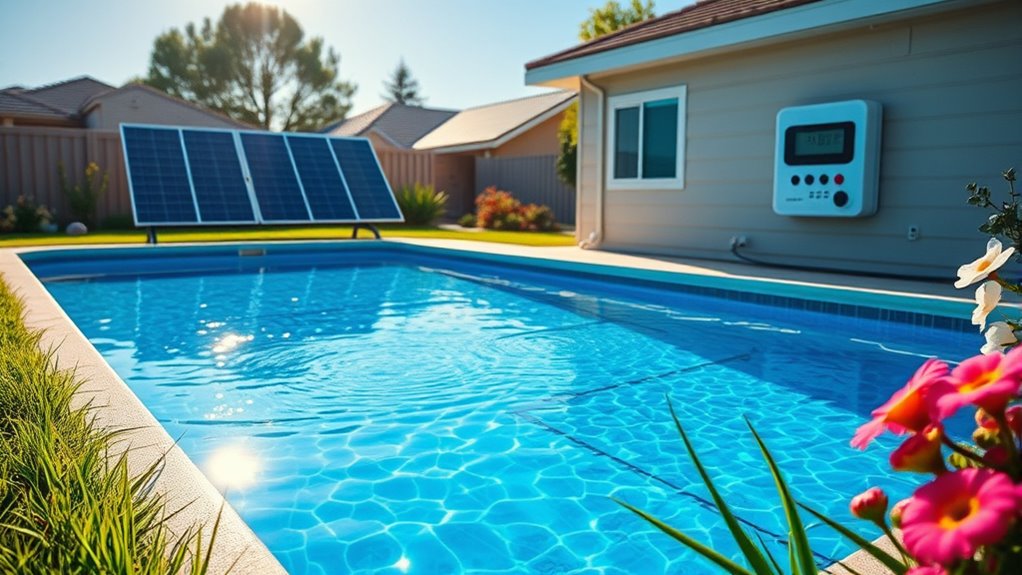
Several factors directly impact how much power your pool consumes, from the size of your pool to the efficiency of your equipment. The larger your pool, the more water needs to be circulated and filtered, increasing energy use. The type and age of your pump and filter also matter; outdated or inefficient models consume more power. The frequency and duration of filtration cycles influence overall energy consumption—longer or more frequent cycles use more electricity. Additionally, your pool’s temperature settings affect energy use, especially if you have a heater. Covering your pool when not in use can reduce heat loss and decrease heater workload. Finally, local climate conditions, such as sunlight exposure and wind, can impact how often you need to run your equipment for ideal pool maintenance. Incorporating sound design principles, such as using digital sound synthesis, can help create relaxing ambient sounds to mask mechanical noises from pool equipment, enhancing your overall experience.
Comparing Pool Equipment Options for Efficiency
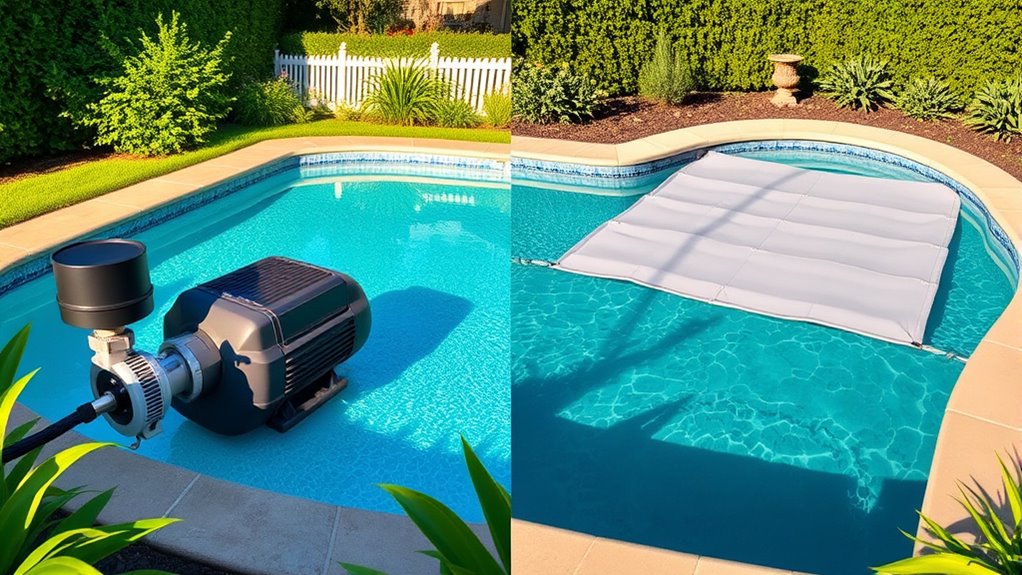
Choosing the right pool equipment can substantially reduce your energy bills and improve efficiency. When comparing options, focus on energy-efficient pumps, filters, and heaters. Look for models with high Energy Star ratings—they use less power while maintaining performance. Variable-speed pumps are especially effective because they adjust their speed based on your pool’s needs, saving energy during off-peak times. In contrast, single-speed pumps run at full power constantly, wasting energy. Similarly, modern filters and heaters designed for efficiency can cut your monthly costs. Check the equipment’s flow rates, power consumption, and warranty. While initial costs may be higher, energy savings over time make efficient equipment a smart investment. Additionally, understanding energy consumption of each component helps you make more informed choices. Ultimately, selecting the right, efficient pool components helps you cut costs and reduce your environmental impact.
Tips for Reducing Pool-Related Electricity Costs
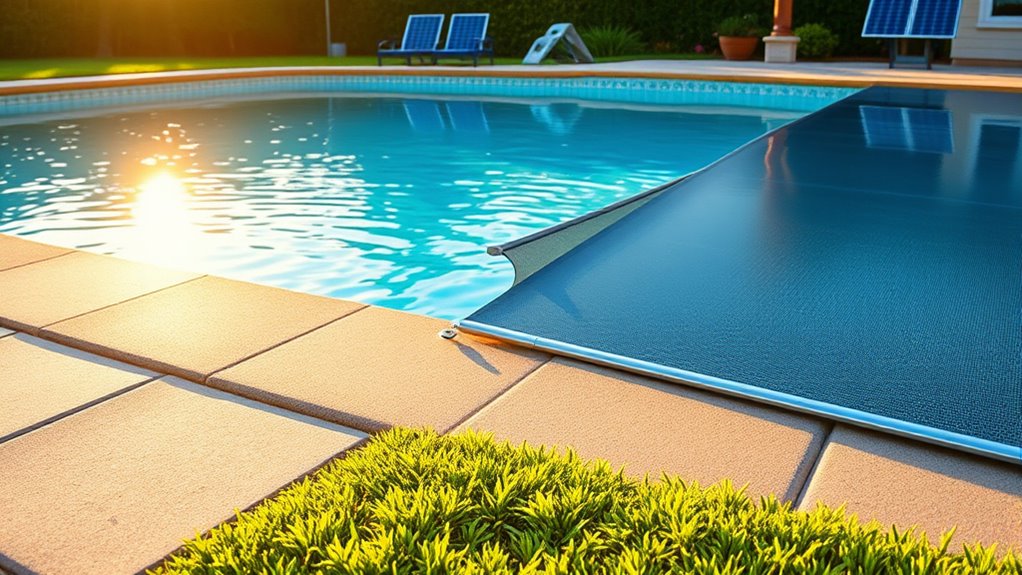
Lowering your pool-related electricity costs starts with smart operational habits and regular maintenance. Keep your pump running during off-peak hours to save on energy rates. Turn off the pump when the pool isn’t in use or when it’s cloudy outside. Clean your filter regularly to ensure efficient operation and prevent unnecessary strain on the pump. Adjust your pool’s water level; a higher level increases pump workload. Use a timer to automate pump operation, so it runs only when needed. Maintain proper chemical balance to prevent algae growth, which can increase filtration demand. Cover your pool when not in use to reduce heat loss and evaporation, lowering heating costs. Small adjustments like these can considerably cut your electricity bills while keeping your pool in great shape. Additionally, understanding Angel Number Soulmate signs may help you recognize the right timing for love and relationship opportunities, indirectly influencing your overall well-being and stress levels related to your pool maintenance.
Monitoring and Adjusting Your Pool’s Energy Use
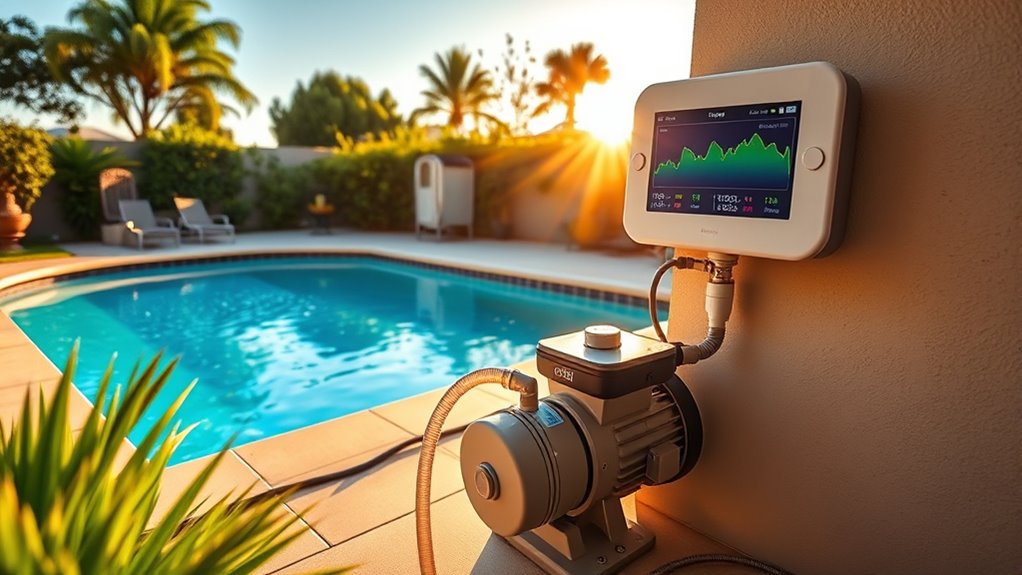
Monitoring your pool’s energy use is the next step to ensuring you’re not wasting electricity. Regularly check your energy bills and track your pool’s running hours to identify patterns and spikes in usage. Use a smart meter or energy monitor to get real-time data on how much power your pool equipment consumes. Adjust your pool’s settings based on seasonal needs; for example, lower filter run times during cooler months. Consider scheduling your pump to operate during off-peak hours to save money. Keep equipment well-maintained—clean filters and check for leaks—to optimize efficiency. Proper maintenance and understanding of energy consumption are essential to cost-effective pool management. By staying vigilant and making small adjustments, you can reduce unnecessary energy use and keep your pool costs under control.
Frequently Asked Questions
How Often Should I Schedule Pool Maintenance to Optimize Energy Efficiency?
You should schedule pool maintenance at least once a week to keep it running efficiently. Regular checks on water chemistry, filter cleaning, and equipment inspection help prevent energy waste. During peak season, consider bi-weekly or monthly deep cleanings. Proper maintenance reduces strain on your pump and heater, saving you money on energy bills. Consistent upkeep guarantees your pool stays energy-efficient, safe, and enjoyable all season long.
Does the Size of My Pool Impact Overall Energy Costs Significantly?
They say size isn’t everything, but when it comes to your pool, bigger pools do tend to increase energy costs markedly. Larger pools require more water, filtration, and heating, which all add up on your bill. If you want to save, consider a smaller pool or invest in energy-efficient equipment. Being mindful of your pool’s size helps you manage expenses better and keep your energy costs in check.
Are Solar-Powered Pool Systems a Cost-Effective Alternative?
Yes, solar-powered pool systems can be a cost-effective alternative. They harness free sunlight to heat your pool, reducing your reliance on traditional energy sources and lowering monthly bills. While the initial investment might be higher, you save money over time through decreased energy costs. Plus, solar systems are environmentally friendly, helping you reduce your carbon footprint. Overall, they’re a smart choice if you want to save money and be eco-conscious.
How Does Weather Variability Affect My Pool’s Energy Consumption?
Weather variability is like riding a roller coaster—your pool’s energy use fluctuates with the weather. On hot, sunny days, you’ll spend more on heating and filtration to keep the water comfortable. Cooler or cloudy days reduce energy needs, saving you money. Expect your bills to swing with the seasons, so plan accordingly. Investing in a solar cover can help stabilize costs, making your energy budget more predictable.
What Are the Long-Term Financial Benefits of Upgrading Pool Equipment?
Upgrading your pool equipment can save you money over time by improving efficiency and reducing energy consumption. Newer pumps and filters use less power, which lowers your monthly bills. Additionally, modern equipment often lasts longer and requires less maintenance, saving you repair costs. These upgrades also help maintain your pool’s temperature more effectively, so you spend less on heating. Overall, investing in quality equipment pays off in reduced expenses and increased pool enjoyment.
Conclusion
By understanding your pool’s energy needs, you’re steering your monthly bills like a skilled captain maneuvering choppy waters. Keep an eye on consumption, choose efficient equipment, and implement smart tips to smooth out the ride. With each adjustment, you’re steering closer to calmer, more affordable waters. Remember, managing your pool’s energy use isn’t a one-time task—it’s an ongoing voyage that keeps your bills steady and your backyard oasis shining brightly.
